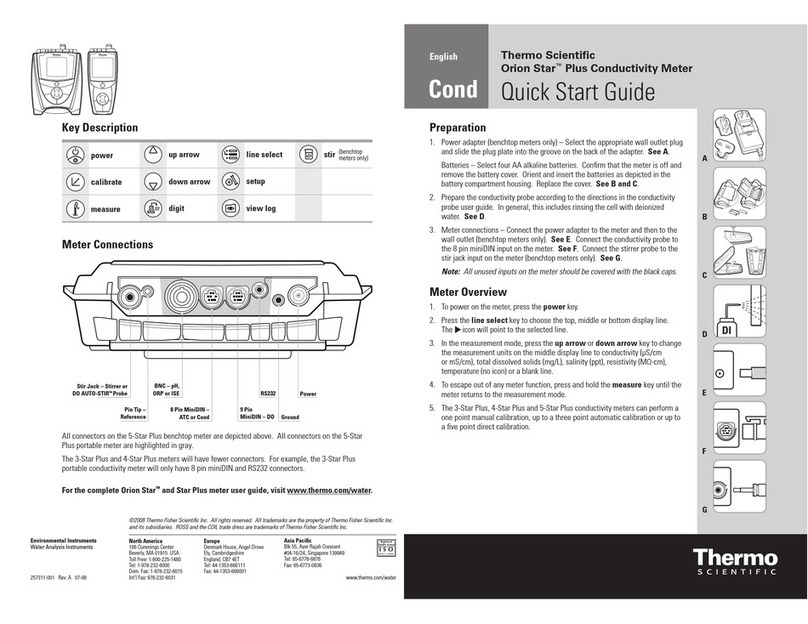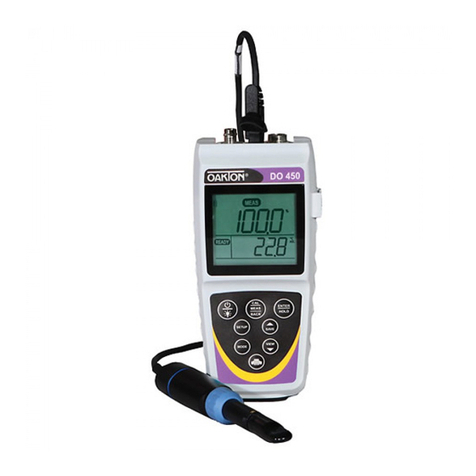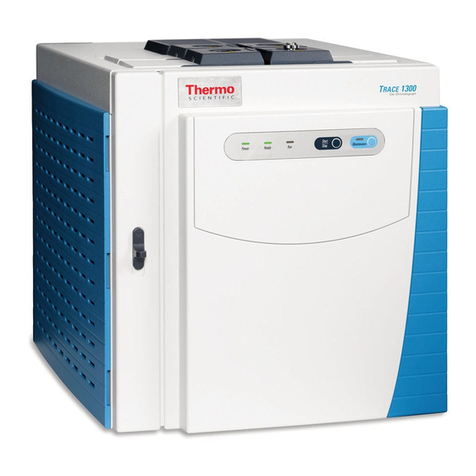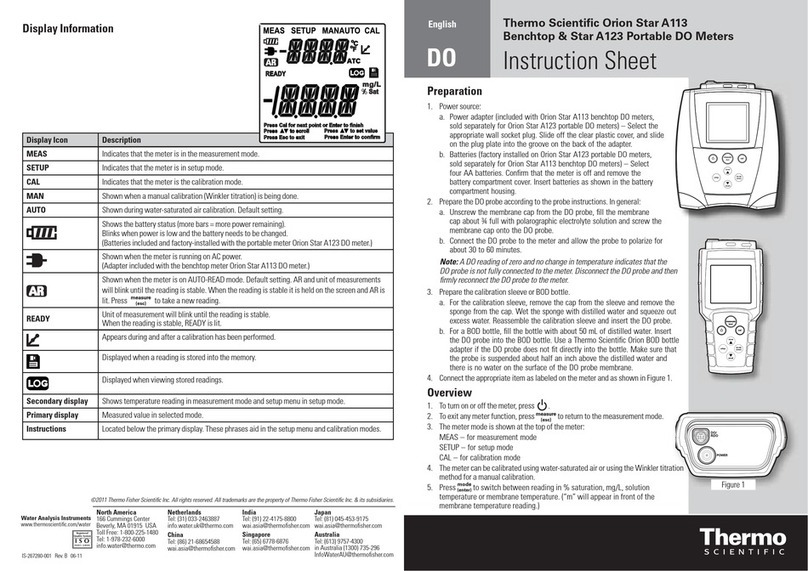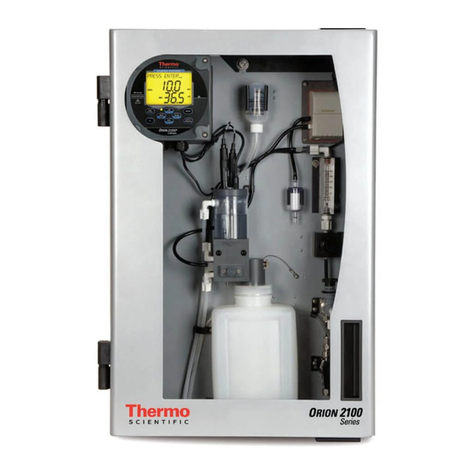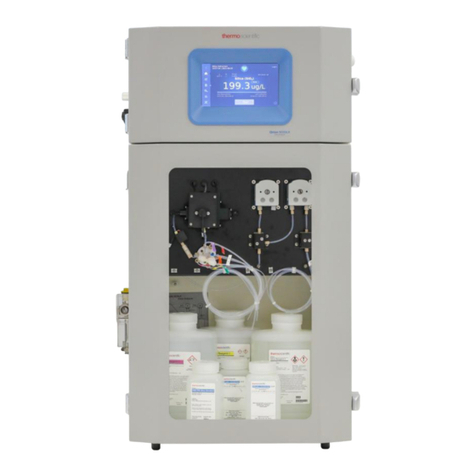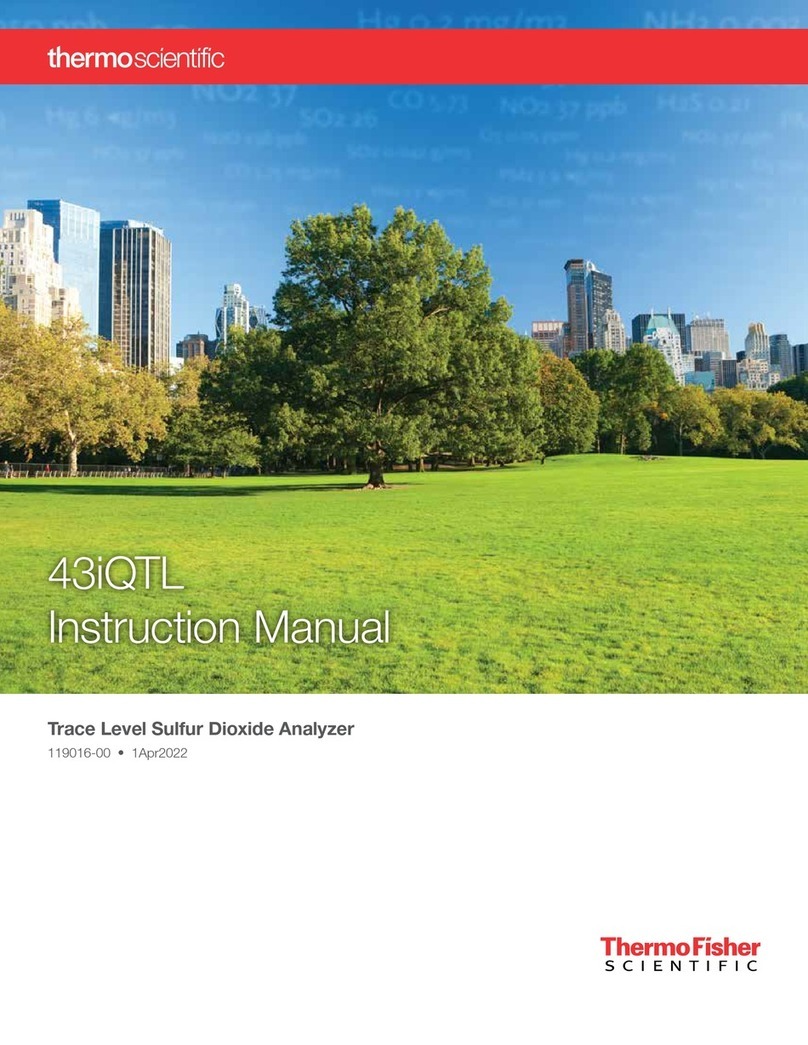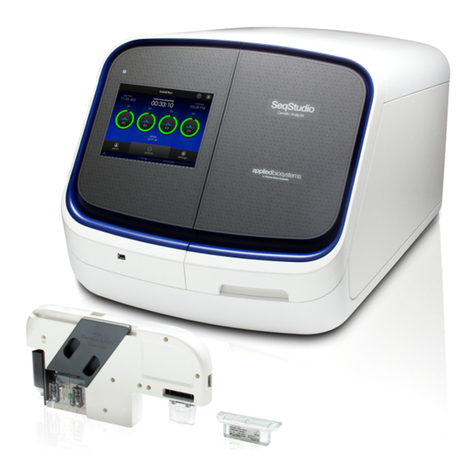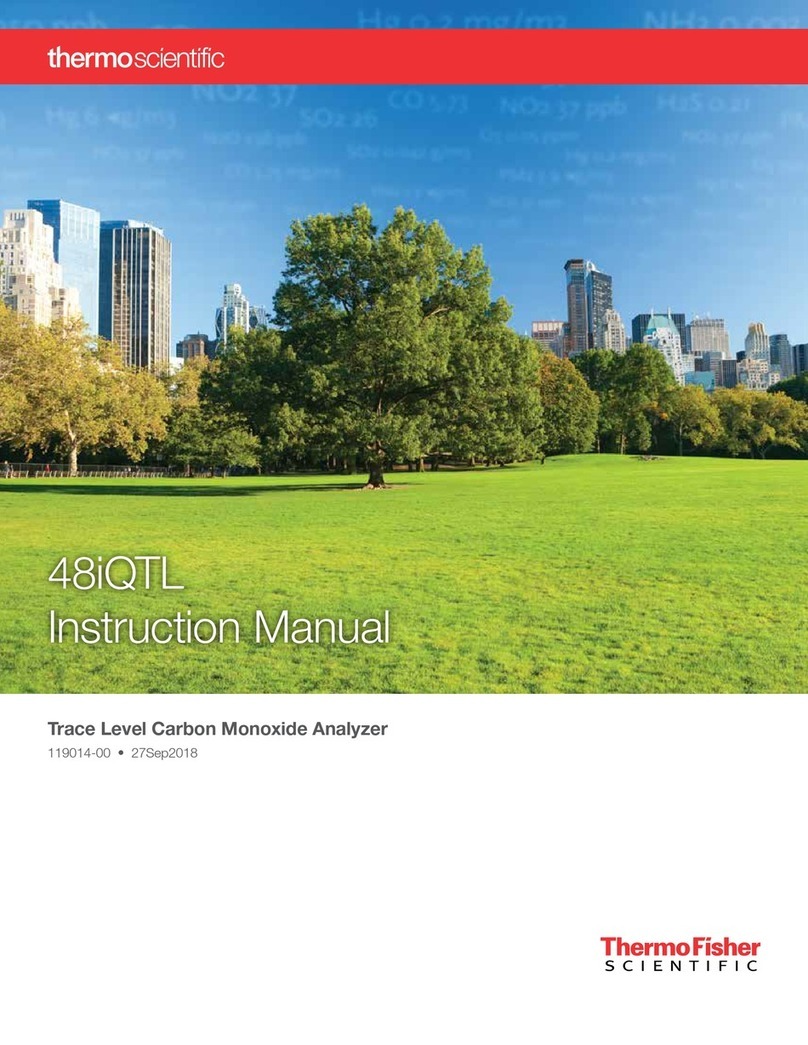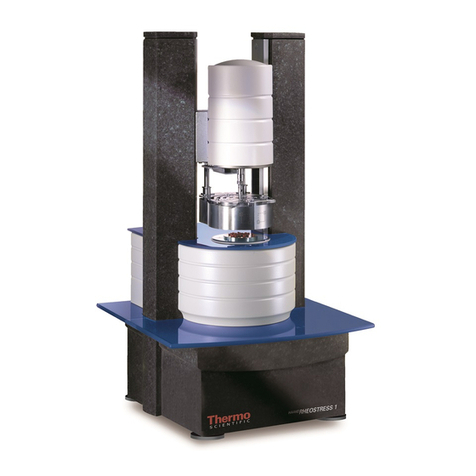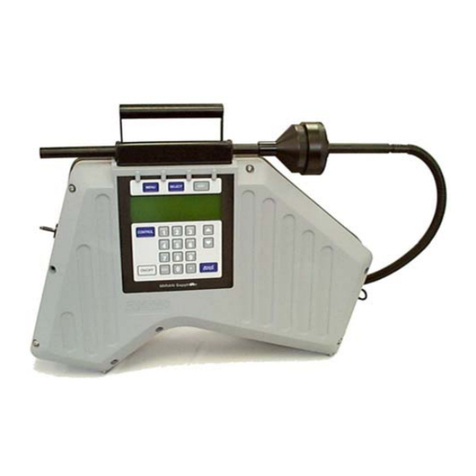
Monochromated X-Ray Source with XR5 Electron Gun
Issue 5 Monochromator and XR5 (HA600054)
9
3.2 XR5 Electrostatic Electron Gun
The XR5 gun assembly forms the source of the monochromatic X-ray beam optics
used for the production of Al KDX-rays in the monochromator system. It consists of an
electron-bombardment-heated emitter (cathode), a control electrode, an electrostatic
lens and a water cooled aluminium anode as shown schematically in Figure 3-2. The
XR5 operates over a power range of <10 W to 200 W corresponding to an electron
spot size on the anode in the range of <100 Pm to 1 mm.
The XR5 consists of a tantalum emitter button, (the cathode), a pinch-off "Wehnelt"
electrode, an Einzel lens and an aluminium anode.
The beam spot-size on the anode is determined by the Focus lens setting, the beam
energy, (i.e. the HT voltage), the cathode bias and, under low-energy/high-current
conditions, by the beam current.
The heat deposited onto the anode is dissipated by water-cooling which is floating at
HT potential. (This results in a leakage current from the HT power supply unit to
ground.)
Figure 3-2: Major Features of the XR5 Electron Gun
3.2.1 Cathode
The cathode emission current is determined by the "Bombard" power, the Cathode
Bias voltage (which biases the cathode positive from ground), and the HT voltage
which biases the anode and the 2 outer segments of the Einzel lens. The cathode can
be driven in temperature-limited or space-charge-limited mode, depending on the
chosen operating parameters values. The cathode is heated by energetic electron
bombardment from the filament.
3.2.2 Anode
The anode is actually an aluminium thin-film deposited on a copper base. Since the
coating will degrade over time the anode consists of a 25mm strip which can be
manually traversed through the electron beam by a mechanical transfer mechanism to
expose a fresh surface when necessary. The maximum beam-spot-diameter used in
practise is less than 1mm, so that typically more than 20 fresh sites are available, and
so down-time for anode exchange is minimised.
The beam spot size on the anode is determined by the focus lens setting, the beam
energy and, under low energy/high current conditions, the beam current.
The heat generated in the anode is removed by water-cooling which is floating at HT
potential. This results in a small leakage current from the HT supply through the water
lines to ground.
Monochromated X-Ray Source with XR5 Electron Gun
Monochromator and XR5 (HA600054) Issue 5
10
3.3 Water Cooling Circuit
The ESCALAB 250 water system provides cooling for the XR5 Monochromator source
and XR4 Twin Anode option (if fitted).
The cooling circuit uses mains water or a re-circulator as its input and then increases
the flow through the X-Ray source by use of a booster pump. The control of the booster
pump, and of the solenoid valves which switch the water flow between the twin anode (if
fitted) and mono source is by the datasystem via the T352/NT power supply.
Both the twin anode and mono anode are floating at high voltage and have water
flowing through them. There is thus electrical current flowing through the water pipes
to ground, termed the "drain", which is loading the power supply, with a maximum
value of 20mA allowed. It is important to keep the conductance of the water as low as
possible. The conductance should be less than 0.01 Siemens/metre.
The anodes used in the XR5 Monochromator source and XR4 Twin Anode option both
consist of a thin layer of aluminium (or magnesium) coated onto a water-cooled copper
wall. It is essential that an adequate turbulent flow of water is present for both of these
sources.
The total flow rate is monitored; if this rate falls below a set level an interlock is tripped.
This factory set trip-level prevents any damage to the X-ray sources due to water flow
problems, provided that the guns are operated within recommended limits. The input
flow is filtered and the flows are selected by solenoid valves according to the gun
selection and operating mode as set by the Avantage data system.
3.4 Monochromator Crystal Assembly
Al KDX-Rays from the anode are diffracted by the twin crystals onto the sample. The
shape of the quartz crystals is such that the small area of X-Ray generation on the
anode is focussed onto the sample. The Bragg diffraction from the crystal lattice
provides the energy filtereing of the final X-Ray beam.
The crystals can be individually manipulated in the dispersive and non-dispersive
directions as well as in height, via the set of 6 manipulators on the back of the
manipulator assembly. These adjustments are made from the outside of the vacuum
system while the monochromator is running. In addition, the position of the e-gun and
anode can be moved, effectively changing the Bragg Angle. All of these adjustments
are made at the time of installation and do not need to be routinely changed by the
operator. The only exceptions to this are slight movements of the mono spot position
using the dispersive and non-dispersive adjusters after a bakeout.
Changing the height of one of the crystals will alter the energy of the crystal’s X-Ray
beam. At installation the heights of crystals are matched so that the energy of the X-
Rays produced by each crystal is the same. If the height adjustment of a crystal is
changed it will cause a mismatch in the energies of the two X-Ray spots generated by
the crystals causing a loss in spectral and spatial resolution.
Figure 3.3: The Monochromator Crystal Manipulator


